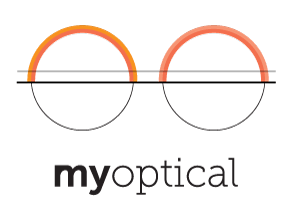Eye Exams & Designer Glasses in Lexington, South Carolina
Vision problems can significantly impact your quality of life, which is why we offer comprehensive eye care services to help patients in Lexington, South Carolina achieve and maintain good eye health.
Our eye center is equipped with the latest optical technology, like our no-air puff eye exam, which helps us provide accurate diagnoses and treatments with no discomfort.
We also have an extensive variety of premium designer glasses that are created with durability and style in mind.


Eye Care Services for the Whole Family
At My Optical, we believe that eye care is essential for the whole family.
That’s why our comprehensive optometric services are offered to patients from the ages eight years of age and up, making our eye center the go-to for all of your family’s vision needs.
- Regular eye exams are important for maintaining healthy eyes and clear vision. We provide comprehensive eye exams to detect and manage eye problems, even in their earliest stages.
Meeting Your Eye Health Needs with Current Technology
Our high-end equipment allows our eye doctors to accurately evaluate your eye health and detect any potential problems early on. Here are some of the equipment you’ll see at our eye clinic.



